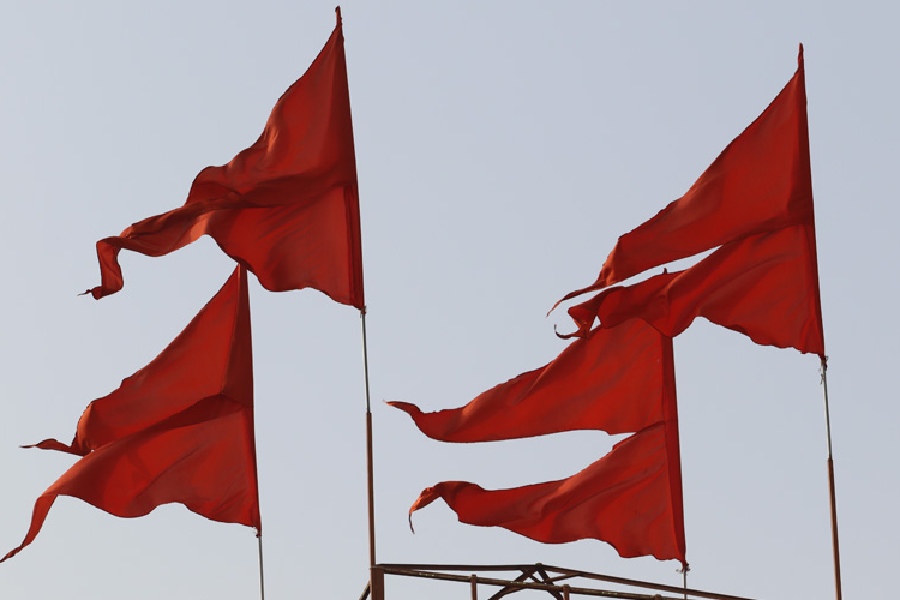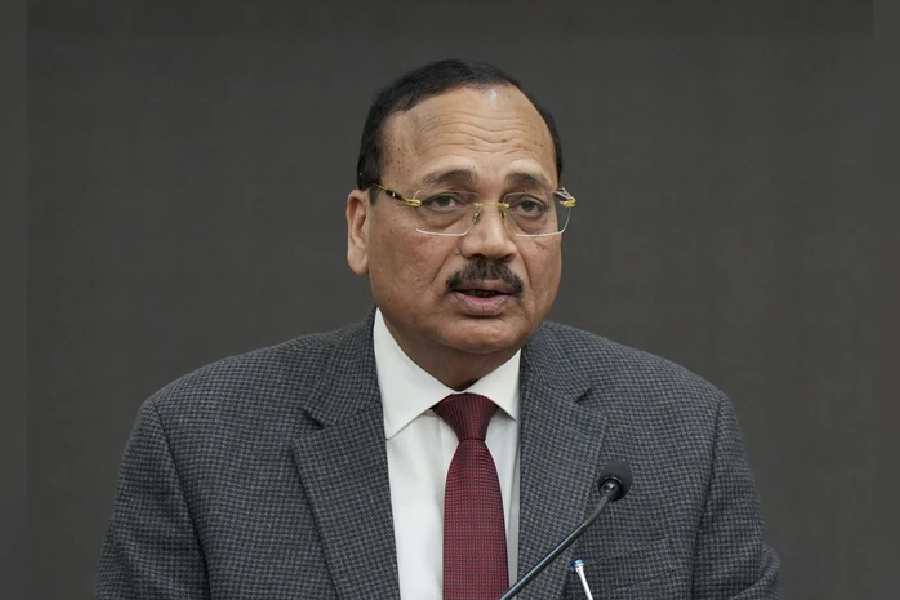 |
As our car turned left towards Jhalong from NH 31C, which goes to Assam, at Khunia crossing, the jungle engulfed us. We were passing through the core area of Chapramari Wildlife Sanctuary — home to elephants, leopards, tigers, Indian Gaur, deer, boars and a host of other wild animals. The narrow asphalt road crosses the elephant corridor at several points, as does the rail line to Alipurduar that also passes through the forest.
A group of elephants often take a leisurely stroll across the road and Indian Gaurs dart past vehicles into the forest. We were literally on the edge of our seats, but sadly, or maybe fortunately, we did not come face to face with any wildlife.
Soon we reached Gairibas, the biggest village before Jhalong. A few kilometres ahead, from a hilltop, we had the first and the most breathtaking view of Jhalong. Far below, the river Jaldhaka meandered through boulders towards the plain. The left bank climbs 200 ft to a green plateau in Bhutan. The Jhalong township with its electric transmission substation is spread out on the right bank. It’s a picture-postcard scene. We had travelled 35 km from Khunia crossing. Paren lay another 10 km ahead.
India’s first hydel power project was established on the bank of Jaldhaka in 1967. A township slowly developed around it. The village that originally stood there is very appropriately called Sundargaon. On the bank of another stream called Rongbu that passes through Jhalong, there is a beautiful forest bungalow. We crossed the stream and proceeded towards Paren.
The tar road ends soon after and a stone-and-mud path leads to a higher plateau through a village called Paren Compound. On the slope, small plots are cultivated. Three villages at different levels of the hill — Lower Paren, Upper Paren and Paren Compound constitute Paren, at a height of about 2,500 ft. The kutcha road ends in front of the West Bengal Forest Development Corporation’s cottages.
I was mesmerised after getting off the car. Facing east, on a raised stone platform, stood two octagonal cottages. They stood out with their shining tin roof and yellow wall with brick-coloured borders against the backdrop of a dense cluster of thick dark green pine and light green sal. The trees grew on a slope that climbs another 3,000 ft to a hamlet called Tunsung. The first rays of the sun touch the small balcony of the cottages. The rooms offered a wonderful view but only basic facilities.
Though it was end-January and quite cold, I came out at the crack of dawn and sat on the balcony to watch the sunrise. The eastern sky turned crimson and the sun emerged from behind the mountain in slow motion. The soft warm rays pierced through the pine trees to bathe the cottages in gold. The silence was accentuated by bird song. I was transported to a world where I would love to remain forever.
Going
There’s a direct bus from Siliguri Mittal bus stand for Jhalong (103 km). But it is irregular. It is best to go to Chalsa and take a jeep to Jhalong. Take a car to Paren from there. Kanchankanya Express goes directly to Malbazar. Hire a car from there.
Staying
West Bengal Forest Development Corporation cottages (Rs 650 per cottage). Contact: 22370060/61.










